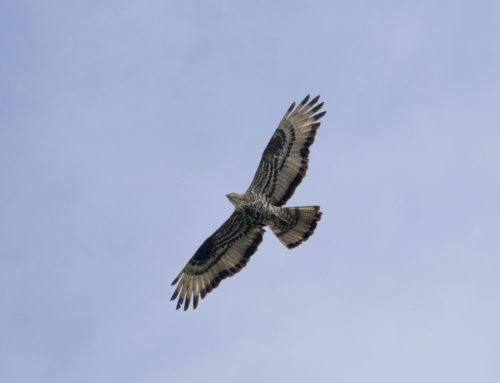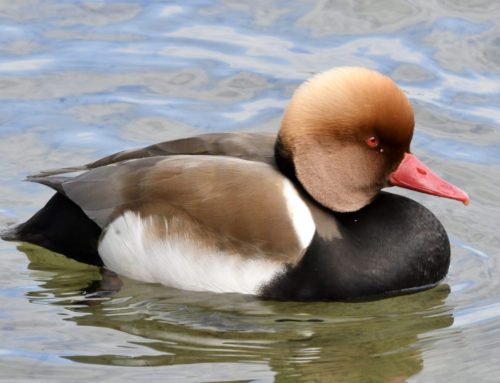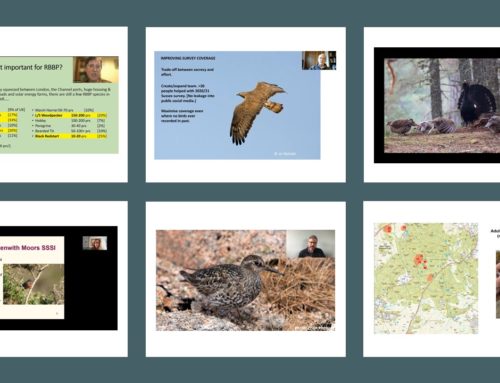A review of the status of the Marsh Warbler

Marsh Warbler by Peter Wilson
A paper published in the May 2021 issue of British Birds (see www.britishbirds.co.uk) describes the status of the Marsh Warbler as a breeding species in Britain in the last 50 years. Ben Bell, Harry Green and John Hodson studied the breeding population in its former stronghold in Worcestershire and they document for the first time the results of their study, which ended in 1999 when that population became extinct. Assisted by the former secretary of the Rare Breeding Birds Panel, Mark Holling, and using data from the RBBP archive, the authors then go on to describe the subsequent changes in breeding distribution and reveal interesting relationships with the numbers of migrants recorded on the British east coast in late spring.
Marsh Warblers formerly bred only in central and southern England, a situation which persisted from at least the 1800s until the second half of the last century (Holloway 1996). During the period under review, beginning in the 1960s, the population was concentrated in Worcestershire along the rivers Severn and Avon. In 1969 there were around 35 singing males in this area. Birds arrived in late May and although singing had ceased by August, birds were present in these areas until mid September. Marsh Warblers usually selected sites dominated by tall herbaceous vegetation such as Great Willowherb and Meadowsweet. The study team found that between 1969 and 1993 there was a marked fragmentation and loss of potential Marsh Warbler breeding habitat and a significant decline in the number of territories in the study area (-79%, from 33 to seven). There was no evidence of a decline in breeding productivity during this period, but productivity here was lower than in the main range of the species in Europe. The species was locally extinct by 1999 after which no Marsh Warblers were seen.
During the 1970s and 1980s Marsh Warblers also bred in other areas in southern England, most notably Kent and Sussex, which became the stronghold during the 1990s, although numbers were never as high there as they had been in Worcestershire. During the period 1973-1998 (the first 25 years of the RBBP archive) breeding was confirmed in 13 counties, all but one south of the Mersey-Wash line. The outlier was Orkney, where Marsh Warblers bred in 1993 and 1997.
In the next 20 years (1999-2018) there was a marked shift in breeding distribution. Breeding was confirmed in nine counties, including the first breeding records for both Norfolk and Yorkshire (1999), Shetland (2002), Suffolk (2010) and Northumberland (2013). All of these new sites were on the east coast of Britain.
The Rare Breeding Birds Panel has collated all known records of potentially breeding Marsh Warblers across the UK since 1973, and these records (fully geo-referenced where possible) form the RBBP archive for that species. Figure 1 shows the decline in the population from 1973 to 1989, largely mirroring the decline in the Worcestershire population, followed by a slight resurgence in the 1990s, when new populations were established in Kent and Sussex. Subsequent to that the numbers have fluctuated between four and 22 pairs/singing males, with 2018 bucking the recent trend of lean years (Eaton et al. 2020).

Fig. 1. Maximum number of breeding pairs of Marsh Warblers in the UK, 1973-2018. From the RBBP archive. The total includes all records of confirmed, probable and possible breeding but note that (to exclude likely passage birds) only singing males present at a site for five or more days are included in these figures.
Analysis of the number of potentially breeding pairs with the numbers reported as Scarce Migrants in annual reports published in British Birds (e.g. White & Kehoe 2020) over the periods 1986-98 and 1999-2018 reveals for the first time a relationship between the number of migrants and the number of breeding pairs. In the first period, when there was still a regular British breeding population, centred in Worcestershire, there was no relationship between the number of breeding birds and the number of migrants. However, since 1999, data show a significant relationship, suggesting that if weather conditions in late spring bring sufficient Marsh Warblers to the east coast of Britain some are more likely to pair up and breed. These birds typically choose rank vegetation in damp areas close to the coast.
Marsh Warblers are sensitive to disturbance when they are pairing up and nest-building, for example by trampling of vegetation for over-eager observers. Birdwatchers should be aware that a singing bird found in suitable breeding habitat may well stay and breed. The RBBP recommends that unless a site can be viewed safely from a distance only, such locations should not be publicised at the time, though the finders should carefully monitor the site for breeding evidence. A breeding attempt may not become apparent until the pair is nest-building (likely to be soon after arrival, in early June) or feeding young (typically in July).
For a summary of the British Birds paper, click here (subscribers to BB can access the full paper using the same link).
Mark Holling
References:
Bell, B. Green, H. Hodson, J. & Holling, M. 2021. The recent history of breeding Marsh Warblers in Britain. Brit. Birds 114: 255-266.
Eaton, M., Holling, M. & the Rare Breeding Birds Panel. 2020. Rare breeding birds in the UK in 2018. Brit. Birds 113: 737-791.
Holloway, S. 1996. The Historical Atlas of Breeding Birds in Britain and Ireland: 1875-1900. Poyser, London.
White, S. & Kehoe, C. 2020. Report on scarce migrant birds in Britain in 2018. Part 2: passerines. Brit. Birds 113: 533-544.






